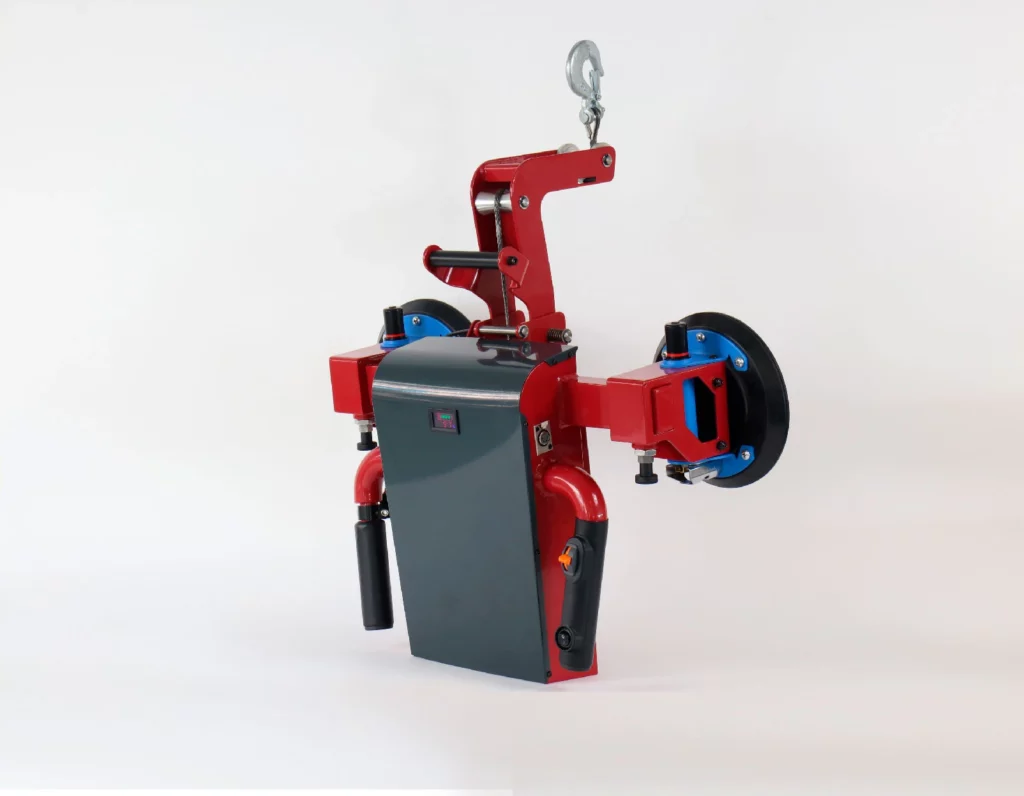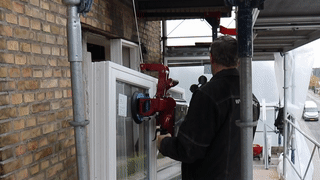New tools for the construction industry should help the working environment without compromising efficiency. That’s exactly what we’ve achieved with Upclimber.
Upclimber wasn’t the first system to lift windows on the construction site, but with a new concept, we’ve created a solution that fits into a different segment – and is actually being used. With a modular approach, the system is constantly being expanded for a broader range of use scenarios.

Why Upclimber?
The smallest windows are simply lifted in manually, and when we started, there were already a lot of good tools for the large and heavy windows. But that left a huge segment of medium-sized windows that is lifted and installed by two people in most cases. However, in reality, it’s just too heavy to lift – also in relation to the limits of the legislation.
Therefore, there was a need for a good, flexible system that works across multi-storey buildings as well as normal houses – in other words, in all these intermediate scenarios on the construction site.
Upclimber was born as a modular concept that can be adapted to different scenarios and window sizes in the mid-segment.
We realised the concept by having the motor unit in the tool itself rather than in a wire winch that you hang up. In this way, you have a simple and versatile tool that can be suspended from anything – and can thus solve more diverse lifting tasks.
Combined with a product programme that expands every quarter, this means that we can constantly develop and add new user scenarios. We’ve begun to expand the application practice to facade panels, for example, where the suction cups for windows can be replaced with other tools.

Impact
Although the law dictates that the medium-sized windows cannot be lifted manually, there was a real risk that the solution was just rented or bought to be shown off when the labour inspectorate came by – which has been the case for previous solutions that tried to solve the same problem.
Upclimber needed to be both easy and efficient to use, so that the tool could outperform manual lifting in practice. And after the first few years on the market, this has proved to be the case: With Upclimber, you can be both efficient and have a better working environment without heavy, manual lifting.
The construction market Stark has purchased a number of Upclimbers for hire so that construction sites can test the system and get to know it in practice before they buy it themselves. At the same time, Bambus (Byggeriets Arbejdsmiljøbus) has Upclimber for demonstration; with Upclimber, those who have to enforce the working environment actually have a viable solution to point to.
With Upclimber, we are already seeing a radical improvement in the working environment without compromising on efficiency – and we expect the system to become even bigger in the coming years.
(Oh, and if you haven’t already seen it, a video of Upclimber went viral earlier this year:)
